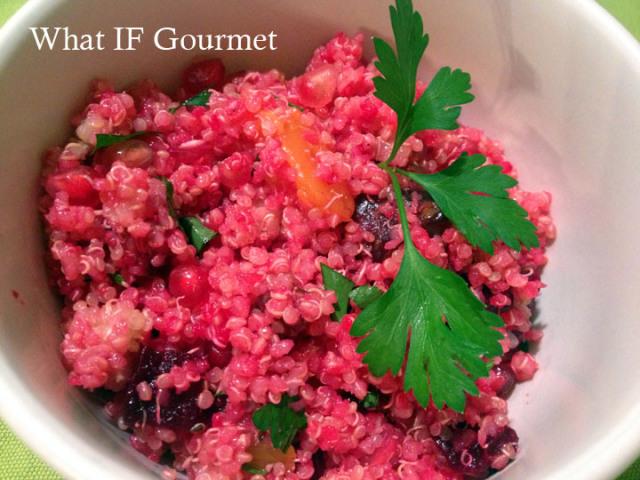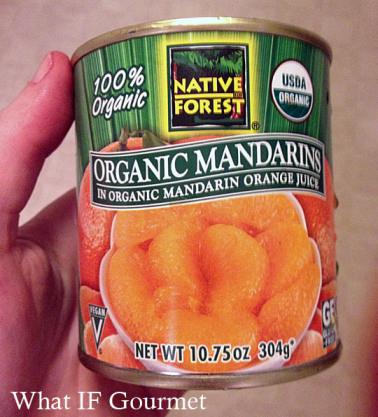I usually post my own recipes here at What IF Gourmet, but I love this salad so much I’m going to shoo you over to Eating Well Magazine and urge you to try it. This ideal winter salad takes full advantage of late-harvest beets, as well as the citrus and pomegranate that are at peak season this time of year. The Midwestern Gentleman and I tasted this quinoa concoction first at my boss’s house at Thanksgiving dinner, then cooked it up for my family during our Christmas in Phoenix, and then made it yet again for ourselves at New Year’s. I’m enjoying the leftovers this week as wonderful brown bag lunches for work. It’s rich in anti-inflammatory ingredients, and is also one of those delightful dishes that can be eaten warm, chilled, or at room temperature.

Before you click on over to Eating Well, here are my observations and tips about this scrumptious salad:
I prefer the lemon juice to the vinegar option in this recipe. Its bright zing enhances the citrusy profile of the salad.
Plain, old, regular quinoa tastes the same as red quinoa, but at less than half the cost. The salad still turns a pretty pink thanks to the beets and pomegranate. If you want a technicolor ruby hue, toss the beets with the quinoa while both are still hot. Tossing them together once they’ve cooled down results in a softer pink. Use big, soft, caramel-sticky dates, and they will practically melt right into the hot quinoa, flavoring the salad beautifully.
I like to dice the beets quite small, into about 1/4″ cubes, so they distribute well throughout the salad. Beet peel tastes to me like straight-up dirt, but I love the sweet gems that they are inside, so if beets tend to taste too “earthy” for you, make sure you are thoroughly peeling off the skin after steaming or roasting them.

I am a little embarrassed to admit I saved time the second time around by using canned organic mandarin oranges in organic mandarin orange juice instead of peeling, segmenting, and juicing fresh oranges. The shortcut worked surprisingly well. If you go this route, avoid those mandarin orange segments preserved in “light syrup” — that is not an anti-inflammatory option! When using the canned oranges, I substitute lemon zest for the orange zest.
Finally, while adding the beets and and dates to the hot quinoa works well, try letting the mixture cool down a bit before stirring in the dressing, the orange segments, and the pomegranate seeds. If you add the dressing while the mixture is still very hot, the quinoa will turn mushy, and the heat will compromise the integrity of the delicate orange segments and pomegranate seeds.
Get the recipe for Quinoa Salad with Oranges, Beets, & Pomegranate at Eating Well and enjoy this hearty, delicious, and nutritious anti-inflammatory dish as a vegan entree, side dish, or snack!
